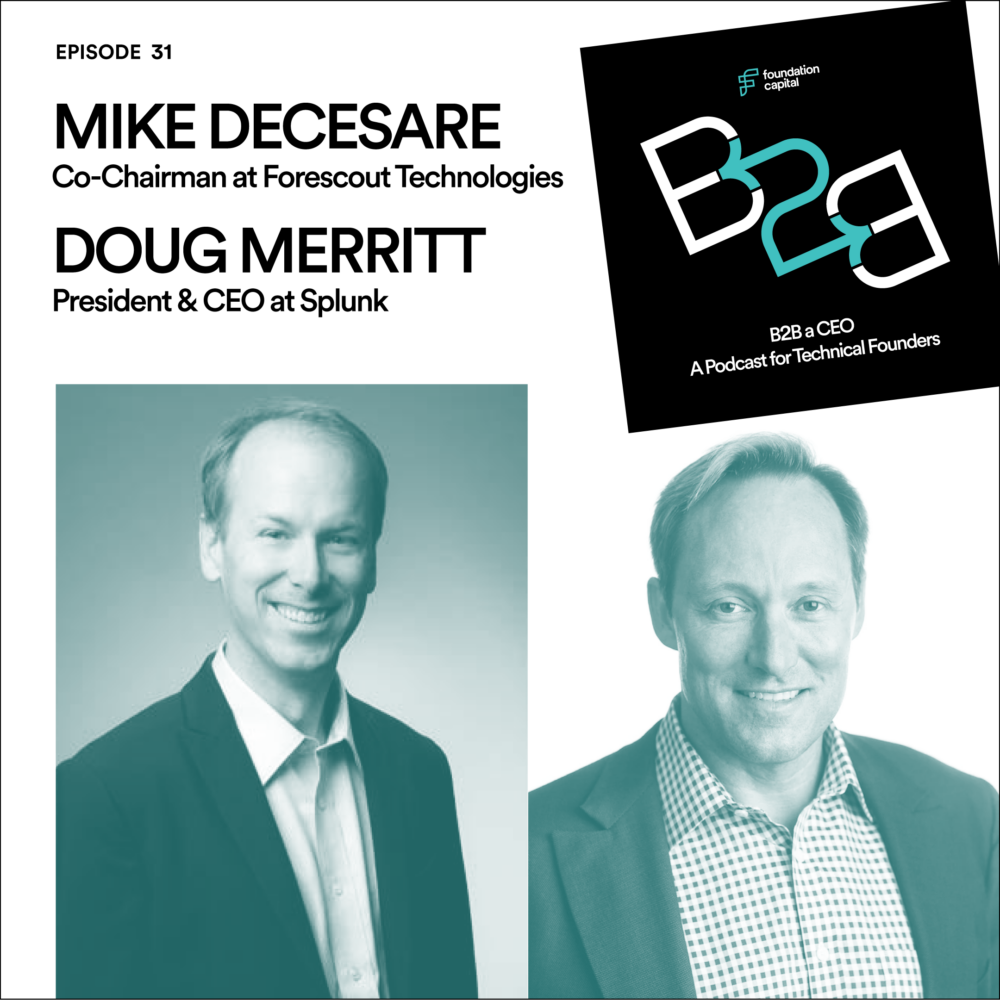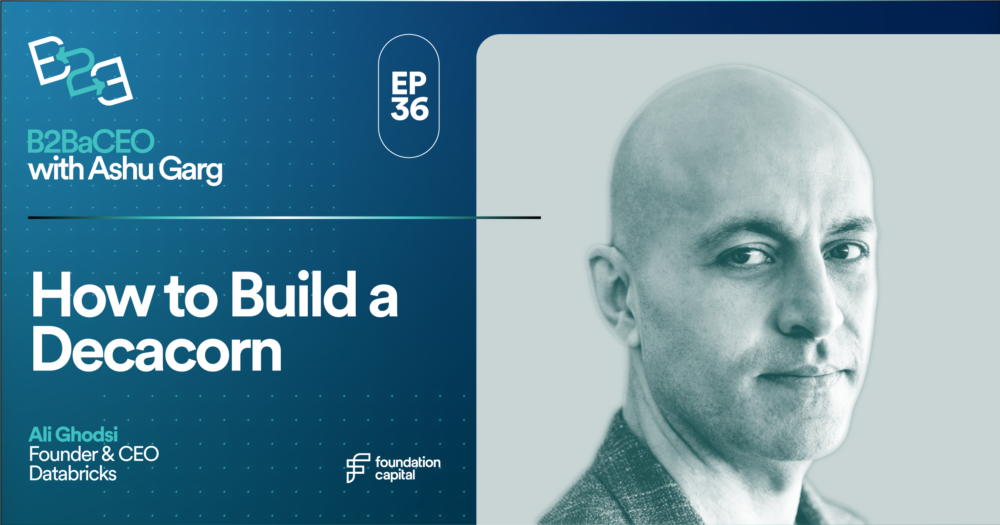Episode 28
How to Commercialize Open Source
With Ali Ghodsi, Co-Founder & CEO of DataBricks
By Ashu Garg
03.18.21

In this discussion from our recent enterprise conference FC BUILD, Ashu interviews Databricks founder and CEO Ali Ghodsi. A rather unconventional company, Databricks began as an open-source project at UC Berkeley that moved into the commercial space after the team realized its impact. Ali and Ashu discuss commercializing an open-source project, identifying product-market fit, and optimizing go-to-market.
I. The Recap
In this discussion from our recent enterprise conference FC BUILD, I interview Databricks founder and CEO Ali Ghodsi. A rather unconventional company, Databricks began as an open-source project at UC Berkeley that moved into the commercial space after the team realized its impact. Ali and Ashu discuss commercializing an open-source project, identifying product-market fit, and optimizing go-to-market.
Founding Story
Databricks—and its original product, Spark—was not built with profit in mind. As a team of academics, the group simply desired to democratize access to data analytics, allowing organizations to perform the kind of data science that drives the success of Silicon Valley’s biggest companies. After trying unsuccessfully to hand the technology to companies that could use it, they realized that if they wanted to change the world, they couldn’t expect others to do it for them.
From Open Source to Commercialized
When transitioning away from open source, a company has two options:
- It can offer its technology on-prem and make money off a service model — This works if you face no major competition, but is difficult to monetize because others will do it better or cheaper than you; its value declines over time.
- It can rent its software to others as part of a subscription SaaS model — Ali recommends this model for most situations, since it is stickier and harder for customers to switch away from.
Product-Market Fit
In the world of entrepreneurship, the phrase product-market fit has a certain magic to it. Ashu quizzes Ali on his definition of, journey to, and advice for finding product-market fit.
Ali’s main takeaways:
- While there is a certain science behind scaling, product-market fit is an art — Unfortunately, that means there is not a step-by-step process to reach success.
- Make sure your product has a unique value and that it is at least 10x better than existing technology — The quick test: Are you a vitamin or a painkiller? “I forget to take my vitamins everyday. But when I have a headache, I need my painkiller.”
- For Databricks, conversations with enterprise customers were key — The team worked hard to understand what their customers needed and how their current product was fallen short.
- Product-market fit is not a formul — but fast iteration and constant testing is key to positioning oneself to find it.
Go-to-Market
For startups lucky enough to find product-market fit, the next big challenge is go-to-market. For too many companies, says Ali, this is the end of the road.
To avoid this, he recommends approaching GTM in three phases:
- Phase 1: Figure out the price point, buyer, and decision makers involved with the purchase of your product — At this stage, the founding team should be working alongside a creative sales leader to experiment with price points and sales processes. This sales person should be hired before marketing, since they will be working alongside the founders to put price tags on the product and speak with enterprise customers.
- Phase 2: Growth — At this point, it’s time to find someone who can scale a sales process. Hire a marketing person that can tell your company’s story in a way that communicates your value proposition without exhaustive and confusing detail. You’ll know you’ve honed this when an average salesperson can sell your product.
- Phase 3: Drive efficiency — This is when you need to hire a finance person who can rein in spending and push the company toward profitability.
Advice
Considering his lessons from Databricks, Ali offers some advice to his younger self:
- Don’t be a one-trick pony — To be successful, you can’t tie yourself to one technology; you need to divorce yourself from your initial product and focus on building a portfolio. This is why the team decided to not to name the company after its first product (Spark).
- Focus on finding people you can trust.
- Be uncompromising — There are always shortcuts to revenue, but don’t accept deals that stray from your value proposition. For example, Ali approved an on-prem deal in the early days of Databricks, despite the company’s cloud-based model. The deal ended up costing far more in convenience and time than it was worth for early revenue.
Published on 03.18.21
Written by Ashu Garg


